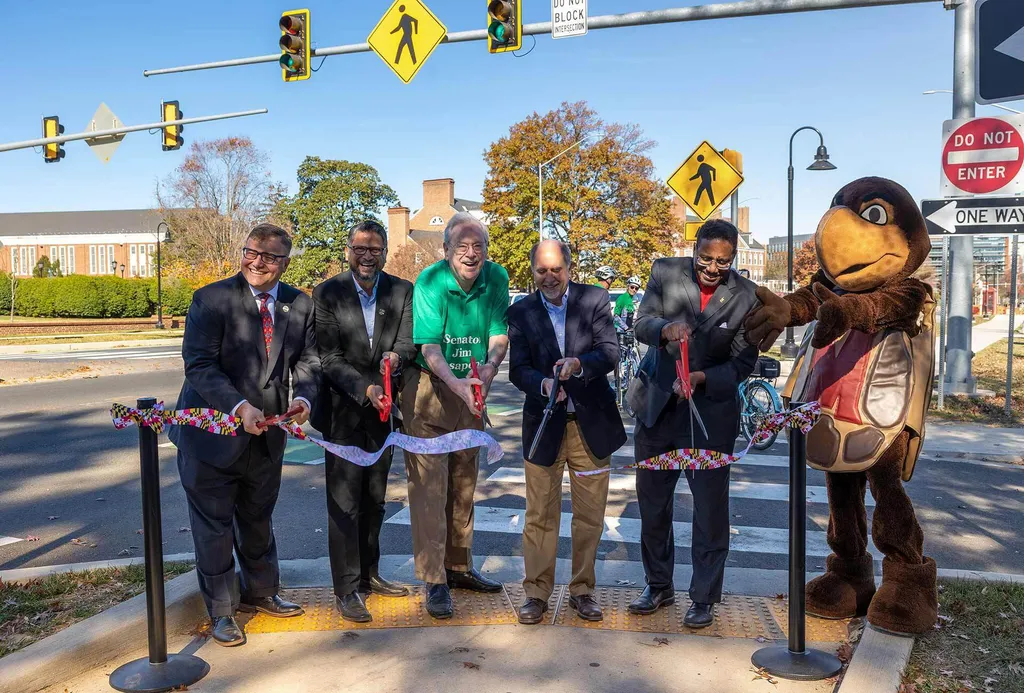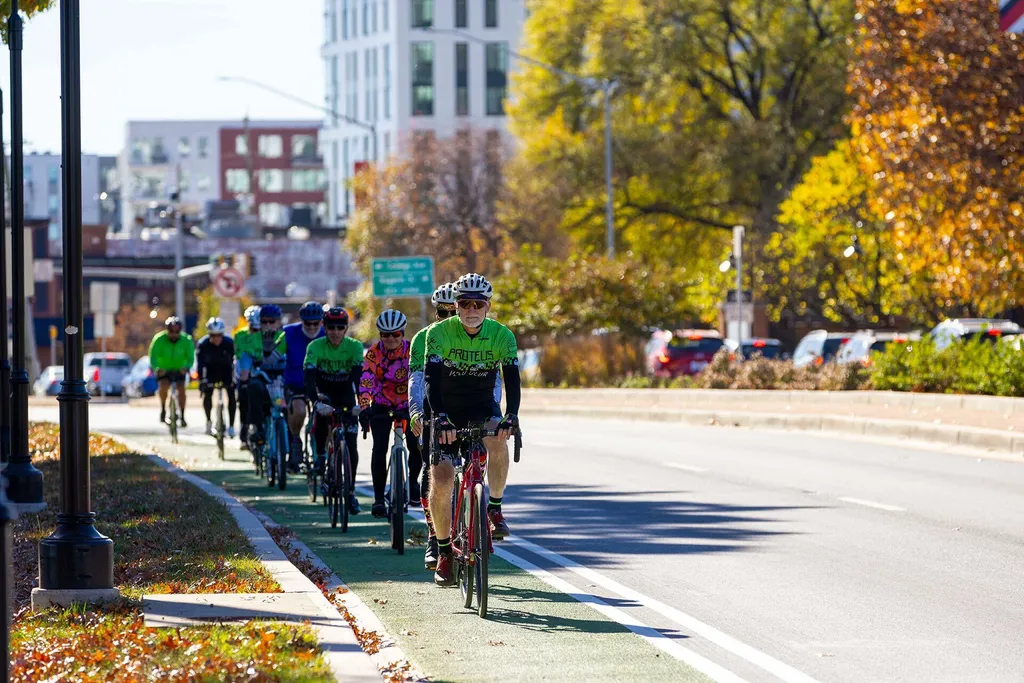- November 11, 2024
- By Allison Eatough ’97
Chester Harvey’s commute from Washington to the University of Maryland via Metro and a foldable bicycle has always been eco-friendly, if not always convenient. Sometimes he’d have to use the sidewalks and clunk over the concrete seams every second. Or he’d take an indirect route using shoulders and side streets to avoid busy Baltimore Avenue.
But with the addition of new, brightly painted bike lanes on College Park’s main street, his ride just got greener—literally. The 5-foot-wide, lime-hued lanes are among the most visible components of a recently completed $56.9 million state reconstruction project to improve safety and traffic flow downtown.
“Now folks, myself included, are incorporating Baltimore Avenue into their bike network in a way that it wasn’t before,” said Harvey, director of the Transportation Policy Research at UMD’s National Center for Smart Growth. “You feel like you are supposed to be there.”
On Saturday, students, bike commuters like Harvey and leaders from UMD, the city of College Park, the Maryland Department of Transportation and Prince George’s County celebrated completion of the 1.5-mile project at a community event on Fraternity Row Field.

“Because of all the hard work that went into this project, our Terps now live, walk and ride in a safer community,” said UMD President Darryll J. Pines. “Whether they go to class, the office or research labs by bus, scooter, bicycle, car or on foot, or one day on the Purple Line, these upgrades have truly transformed one of the primary gateways into the University of Maryland.”
The event included a ribbon-cutting ceremony, music from members of the Mighty of Sound of Maryland and a procession led by Testudo along Baltimore Avenue, where attendees biked and walked using the new features.
“Safety is number one,” said Marden Timen, owner of College Park Bicycles, as he watched pedestrians and cyclists pass by. “Having designated lanes makes it safer for everyone, including the drivers.”
More than 35,000 motorists use the section of Baltimore Avenue between College Avenue and MD 193 (University Boulevard) each day.
While construction began in 2020, planning for the improvements started more than 25 years ago, said state Sen. James Rosapepe, who worked with stakeholders to move the project forward.
“It’s been a long time coming, as everyone in College Park here knows, but isn’t it great?” he asked, as cyclists rang their bells in support.

Along with bike lanes, improvements include a pair of widened lanes in each direction and the addition of auxiliary lanes that transition into turn lanes, a raised median, intersection and pedestrian lighting, and upgraded sidewalks and crosswalk ramps to comply with the Americans with Disabilities Act.
The project also improves bicycle and pedestrian access to the Paint Branch Trail and will provide direct access to future Purple Line light-rail stations on and near the UMD campus.
As the event came to a close, County Councilman Eric Olson reminded attendees that a safer Baltimore Avenue attracts more foot traffic—a bonus for existing and future businesses in the area.
“No longer is this the highway to drive through College Park,” he said. “This is now our Main Street.”
Topics
Campus & Community